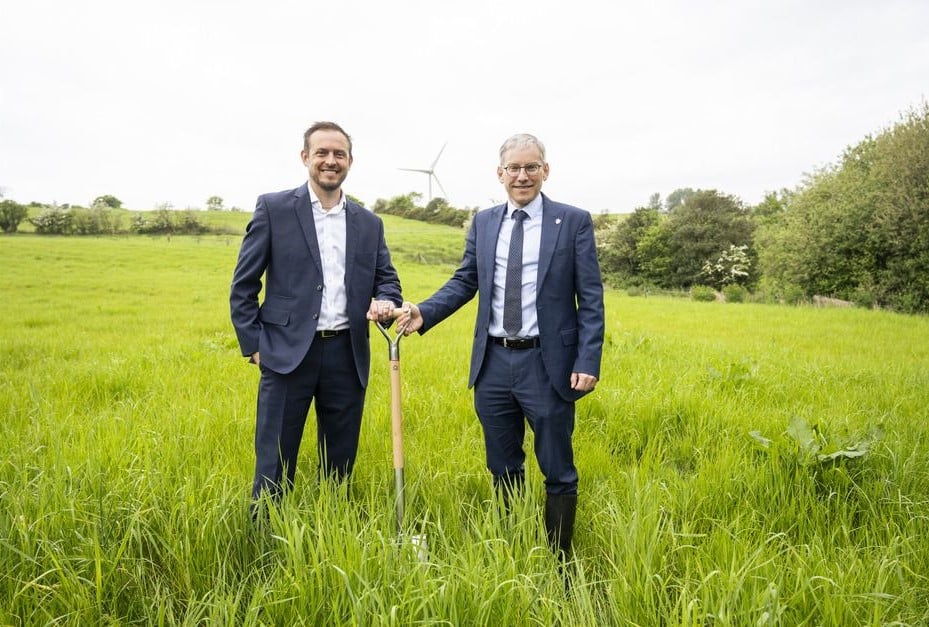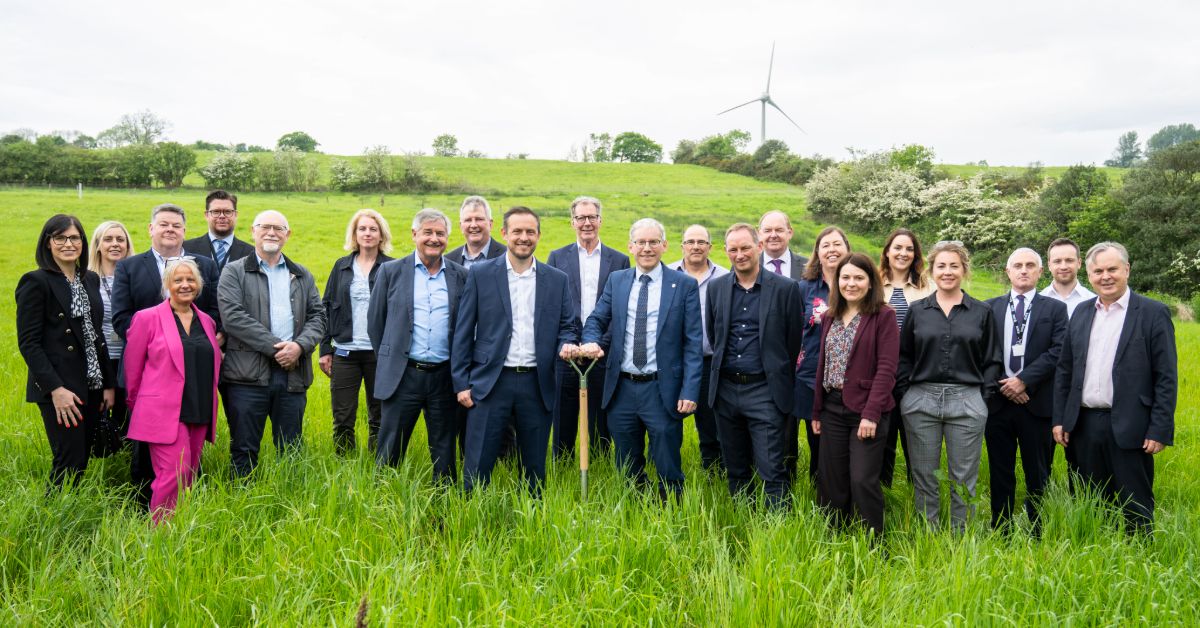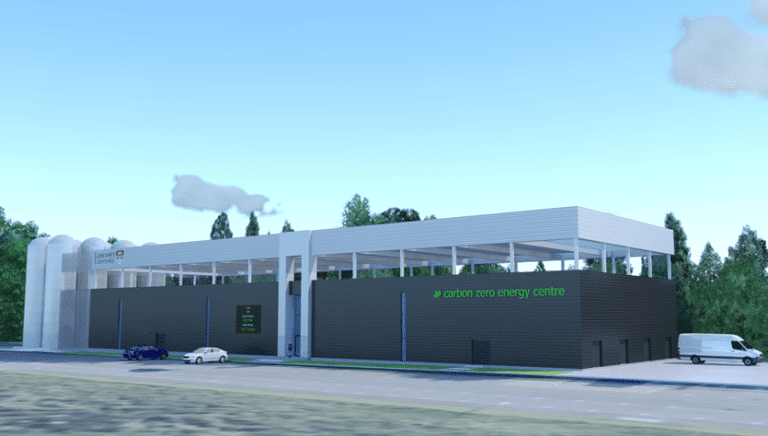Lancaster University closer to Net Zero with two major projects
Vital Energi will be working in partnership with the Lancaster University to deliver a major new energy project which will virtually eliminate their use of fossil fuel gas and move them significantly closer to achieving their scope 1 and scope 2 net zero targets.


The projects will see the installation of thousands of solar panels and the creation of a low carbon energy centre, housing highly efficient air source heat pumps, which received £21M of funding from the Government’s Green Heat Network Fund (GHNF). Both schemes are part of the University’s wider decarbonisation efforts, with the University already being one of the highest producers of renewable energy in the UK.
Today saw the projects take a major step closer with the University holding a groundbreaking event at the site of the new solar farm, marking the official start of the projects which will strengthen Lancaster’s position as a global leader in sustainability.
Lancaster University’s Vice Chancellor, Professor Andy Schofield, led the event which brought together members of the University community including the project team, researchers, Vital Energi, and suppliers.
Lancaster University is investing a further £57m to decarbonise its campus and the University is also home to one of the largest groups of environmental science research groups in Europe.
“We’re delighted to mark the beginning of our partnership with Lancaster University for the delivery of these projects, that will contribute towards the University’s journey to achieving net zero. The solar farm, energy centre and district heating projects will show how collaborative partnerships can deliver innovative and sustainable solutions. We look forward to working with Lancaster University who are demonstrably committed to protecting our planet.”
About the Projects
Solar PV Farm
A new £17M ‘solar PV farm’, funded by the University will consist of more than 17,000 photovoltaic (PV) cell panels, constructed on the University’s land to the east of the M6. The 11.5MW, 52-acre solar farm will generate enough energy to power the equivalent of 3,000 homes. The project also includes a comprehensive landscaping scheme which will enhance the hedgerows and woodland in the area, protecting views for local walkers and creating an environment that will support wildlife and increase biodiversity. Construction of the solar farm will begin in late spring/early summer 2024.
The new solar farm will also house a bespoke research facility enabling research and teaching across disciplines from plant science, to control system engineering. The solar farm will encompass a 50kW agrivoltaics demonstrator enabling the production of crops and electricity from the same land area. It is believed to be the first field demonstrator in the UK and will comprise an area of tracking photovoltaic arrays and an area of vertical panels.
Low Carbon Energy Centre
Following the award of more than £21M of funding from the Government’s Green Heat Network Fund (GHNF), Lancaster University will begin construction of a new ‘Low Carbon Energy Centre’ in Autumn 2024. The GHNF funding will be matched by the University to develop a new £40 million facility on Bailrigg campus which will virtually eliminate the use of gas to heat its Bailrigg Campus. The energy centre will use state-of-the-art heat pump technology to generate a projected 39-Gigawatt hours (GWh) of low carbon heat, enough to heat 95 per cent of the buildings on campus.
Lancaster Campus District Heat Network
Lancaster University has also been awarded £560,387 for the Lancaster Campus District Heat Network from the Heat Network Efficiency Scheme (HNES). Funding will go towards upgrading infrastructure across the network and allow it to be “Heat Pump Ready”. The project therefore includes the installation of more efficient pumps and meters, improving the central building management system, enhancing insulation throughout the network. HNES funding will be crucial in achieving the University’s pledge to reach net-zero carbon emissions from electricity and heating by 2030.
More information about Lancaster University’s commitment to sustainability is available on the website www.lancaster.ac.uk/sustainability
Sustainability Key Messaging
Lancaster University is investing £57million to further decarbonize its campus and help towards achieving a Net Zero future. Lancaster is one of the highest producers of renewable energy out of all UK universities.
- Solar PV Farm
- New 11.5MW solar PV farm with 17,000 solar panels at the Forrest Hills site generating enough to power over 3000 average households.
- The new solar PV farm will generate enough electricity to power a journey of 34,580,000 miles using an electric vehicle – equivalent to driving from London to France, over 80,000 times.
- Net zero energy
- New energy centre will generate enough low-carbon heat through air-source heat pumps to heat 95% of buildings on campus.
- 5km of district heating pipework to connect the buildings on campus together.
- This project will virtually eliminate the use of gas heating on its Bailrigg Campus.
5MW solar PV farm with 17,000 solar panels at the Forrest Hills site generating enough to power over 3000 average households.
The new solar PV farm will generate enough electricity to power a journey of 34,580,000 miles using an electric vehicle – equivalent to driving from London to France, over 80,000 times

The new energy centre will generate enough low-carbon heat through air-source heat pumps to heat 95% of buildings on campus. 5km of district heating pipework to connect the buildings on campus together. This project will virtually eliminate the use of gas heating on its Bailrigg Campus.

